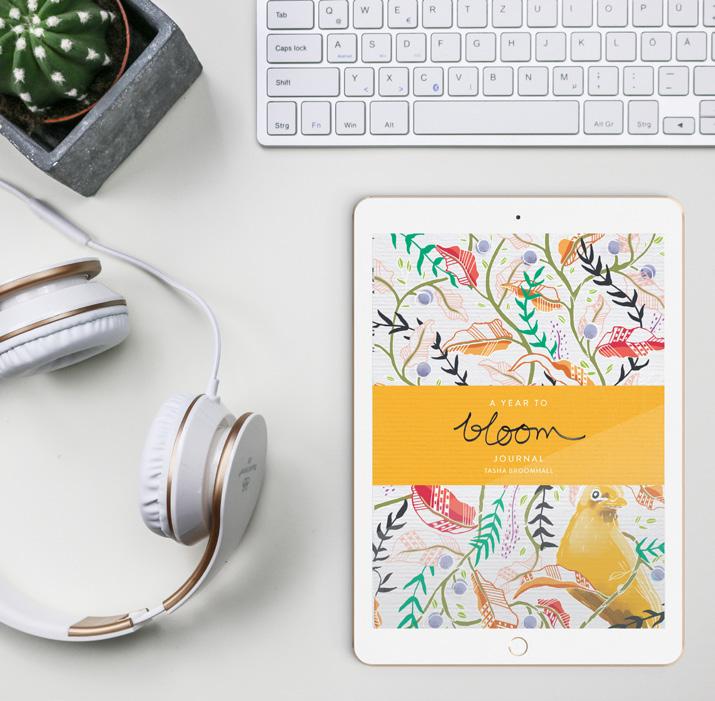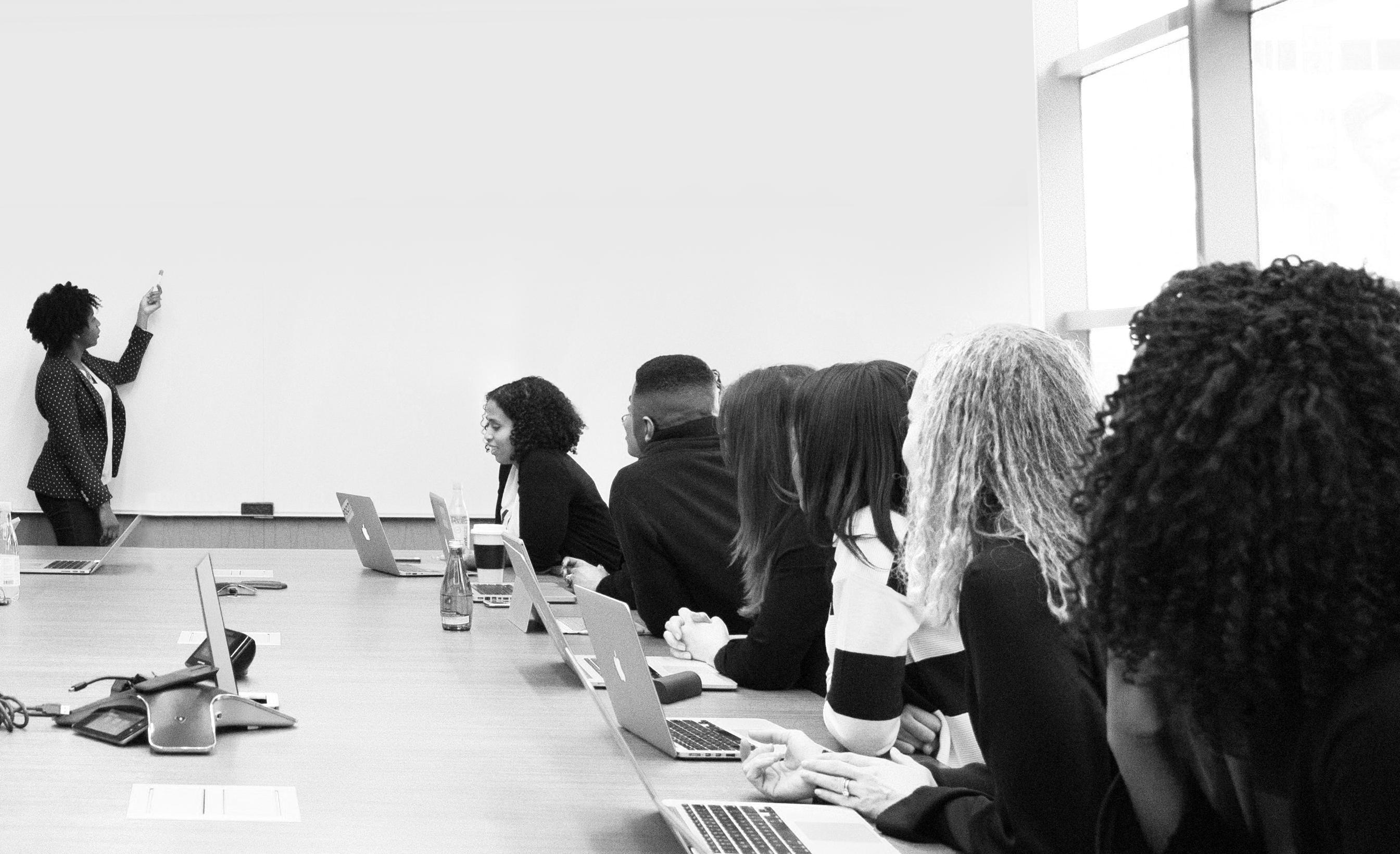
18 minute read
EMPLOYEE DISCLOSURE
Research indicates that 1 in 5 of us will experience mental illness in a year, and up to half of us in our lifetime. This high prevalence means mental health issues are certainly present in your workforce and therefore need to be considered when creating inclusion and diversity initiatives.
Reasonable adjustment/accommodation are supports or modifications made to an employee’s work conditions, work environment or work tasks to assist the person to overcome the functional impacts of their mental illness and to maintain their employment. The reasonability test requires that implementing the adjustment would not cause undue hardship to the organisation. [1]
Advertisement
Under disability discrimination laws in Australia, organisations are required to consider possible adjustments to assist a person to overcome any functional impacts they experience from a range of issues, including mental health issues. Having mental health issues doesn’t automatically mean a person will experience disabling impacts. For some, there will be no visible impacts in the workplace, however, if there is, employers are required to assess the employee’s needs in the context of their role and the organisation’s capacity to adjust. Making reasonable adjustments to the everyday work tasks of someone who is experiencing mental health issues is an important way to both connect with and support your employee’s needs and to meet your obligations.
Supervisors and managers need to have a broad understanding of the most common mental illnesses and their possible functional impacts in the workplace so that when they identify these impacts, they will be able to meet their obligation to implement reasonable adjustments where possible. When designing reasonable adjustments, we must balance the organisation’s operational needs (including possible impacts on other employees) with the needs of the individual employee. This simple model can assist in designing and implementing reasonable adjustments:
Design
1. Analyse (the core requirements of the job – e.g. key tasks, workflow issues, seasonal variations, KPIs, location/work area issues, etc.) 2. Assess (the employee’s functional capacity against these core requirements, using multiple sources of information – the individual, their supervisors, work output measurements, observations, etc.) 3. Identify (possible reasonable adjustments to accommodate for the functional impacts).
Articulate
The identified adjustments may require approval and discussion with HR/senior management. Articulate the process and decisions to the employee as you work through the process. Determine with the employee how any visible adjustments will be articulated to other employees.
Document
Keep a record of the process; the determined adjustments, time frame for trial and review, KPI’s for review and how the adjustments are being articulated to others. It is a good idea to start with a trial period and assess from there if the adjustments can or need to become permanent.
Some examples of adjustments: • Allow telephone calls during work hours to doctor/ counsellor/other supports, and provide a private place to do so. • Flexibility with work schedule – hours/start time/ work from home/change of duties. • Minute all meetings and expectations to assist with memory and concentration issues. • Don’t force people to attend social events if this is an issue for them.
The type of adjustments will need to be individually designed. There are some great resources to assist with this process:
http://returntowork.workplace-mentalhealth.net.au/ www.jobaccess.com.au www.jan.org
This is an edited extract from BLOOM! At Work. Available for purchase in hard copy and e-book.
Some examples: • A data entry clerk who lives with social phobia and has been having panic attacks in the open reception area where their desk is located, responded well to being moved to a more private office space.
Their role did not require them to be based in the reception area and so they were then able to work with fewer distractions and less distress. This was a reasonable adjustment as it did not affect them completing the inherent requirements of their job, and their organisation had the office space available to relocate them. • A factory assembly line operator living with schizophrenia was on medication (which covered most of the symptoms of his illness but not all) but he experienced ongoing auditory hallucinations which he recognised were not real and yet sometimes found distracting. He was authorised to listen to music through an iPod as a distractor from his hallucinations. This assisted him in staying focussed on his task. An OHS assessment was done to ensure that he would not be at any risk by listening to the music rather than the noise of the factory. • A senior lawyer living with bipolar disorder usually becomes unwell once every few years. However, due to the possible significant impact of his legal work, he has ongoing monitoring for his mental health. He has negotiated with his employer for them to liaise with his doctor and vice versa.
If either party identifies signs that he may be becoming unwell, his fitness for work is assessed again.
Is your organisation
PSYCHOLOGICALLY SAFE?
When you embed mental health best practice into your workplace culture, everyone benefits. Make creating a culture of mental health and wellbeing enjoyable and sustainable. Minimise psychological risks and costs and maximise the return on your mental health investment.
It is not sustainable to simply tick boxes around workplace mental health & wellbeing. Organisations need the systems and skills imbedded in their culture to both meet their obligations around psychological injury risk and to foster positive mental health & wellbeing - enhancing employee experience and performance. The foundation of this is developing a VALUES BASED CULTURE, supporting POSITIVE LEADERSHIP, providing EAP supports and enhancing these with proactive WELLBEING PROGRAMS.
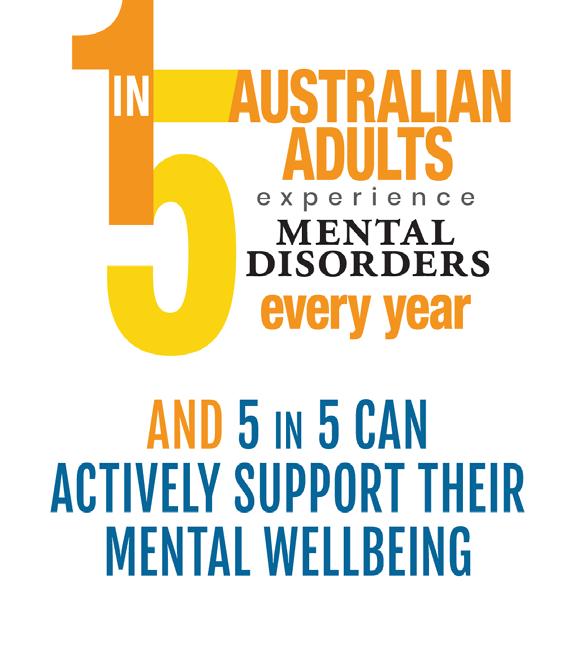
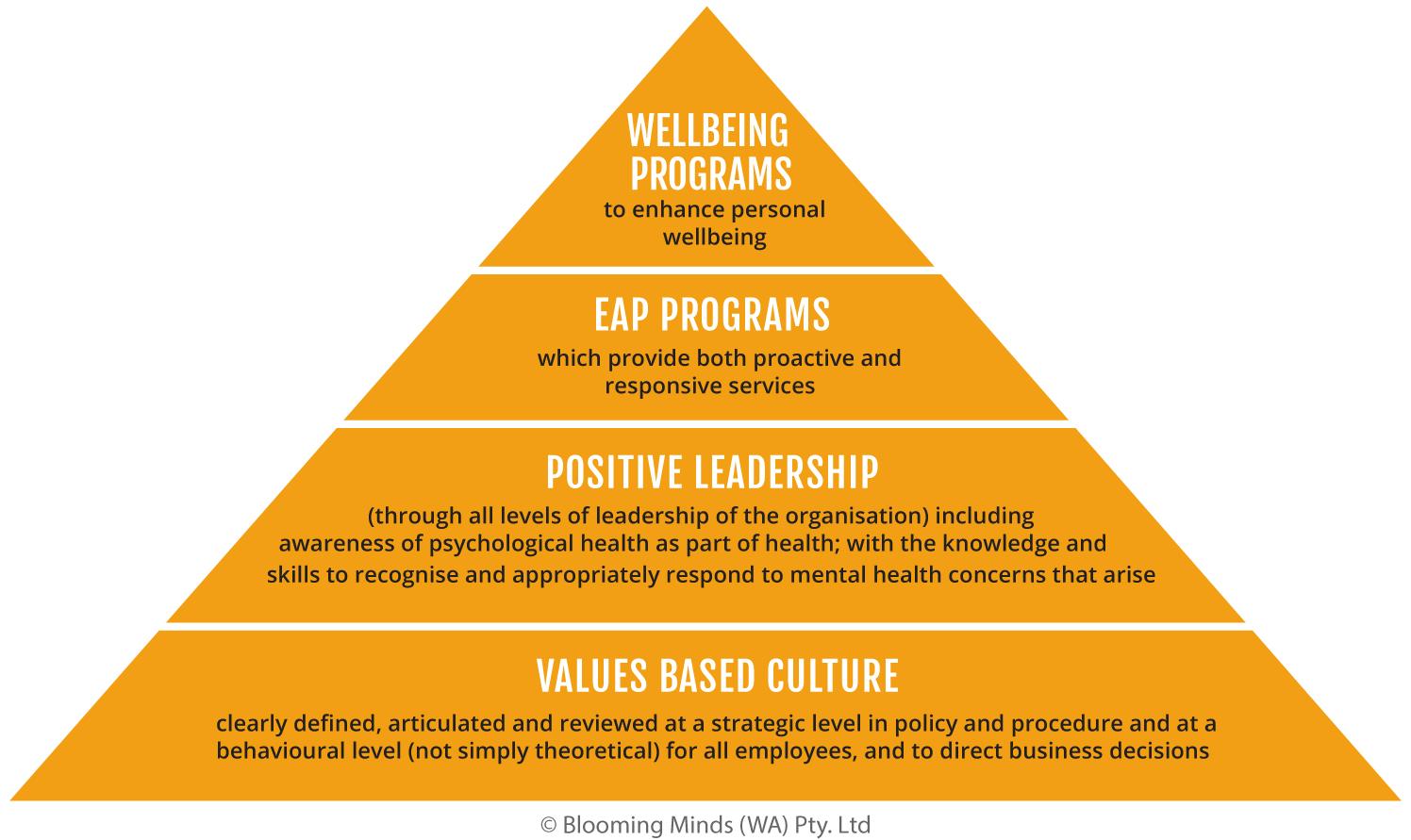
OF
Our range of customisable programs, online courses and resources combine the best academic research with our realworld experience. We help you to transform mental health and safety in the workplace while enhancing workplace cultures. Equip your leaders and employees with the insights, tools and strategies they need to recognise and address workplace mental health issues both proactively and responsively.
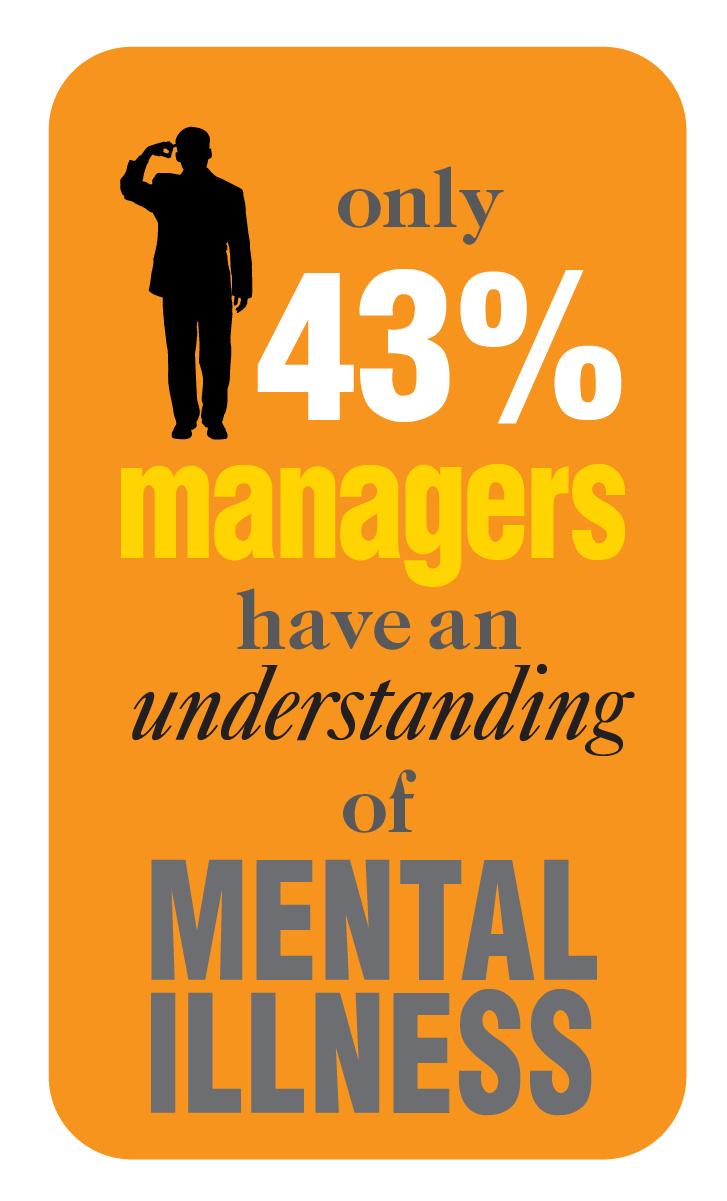
Lisa Annese
By Tasha Broomhall
To understand more about diversity and inclusion in Australian workplaces, Blooming Minds’ Director Tasha Broomhall recently spoke with Lisa Annese from Diversity Council Australia.


TB: Tell us a little bit about the Diversity Council for those people
who are not familiar with your work.
LISA ANNESE: DCA is a not-for-profit member organisation. We’ve been around about 30 years and we have over 600 members. Our members are organisations, workplaces across the country in a whole range of industries. What we do is we develop resources. Primarily evidence-based research, but we also run events and do a whole lot of communications’ resources that assist our members. Australian workplaces build their capability in diversity and inclusion across the whole spectrum of diversity dimensions, including gender, culture, age, disability, indigeneity, LGBTQ inclusion, et cetera, et cetera. Our ultimate aim really is to ensure that we create a labour market in the economy where diverse groups of people can maximise their potential and be included in our workplaces without any irrelevant kinds of barriers.
TB: What are the sorts of barriers that are there currently? LISA ANNESE: It’s a really complex area to work in in the sense that if you were an organisation that was trying to increase the number of women in leadership you might take a different strategy than, if you were trying to improve the accessibility of your products for people with disabilities. What every organisation has in common is a legacy that the workplace was invented at a time in the industrial era, certainly that’s the workplace that we’ve adopted in Australia, where diverse groups weren’t really factored into the design of workplaces. The workplaces were designed for able-bodied people with no caring responsibilities, no risk of pregnancy. Certainly our economy in our world has changed so much since that initial inception of what a modern workplace should look like and especially in Australia where we have a multicultural workforce where we have removed a lot of barriers, legally. We have an age discrimination act, we have a race discrimination act, we have a sex discrimination act, but we actually still have invisible barriers that are part of the fabric of many processes and practices of workplaces, whether that’s through the way they recruit or the way they structure their work or the way in which they identify a pipeline for growth into leadership. I don’t think you could look at leadership in Australia and say that it accurately reflects the talent that’s out there so that they’re probably some of the themes that are in common amongst all workplaces, with respect to barriers for diverse people. TB: Why does diversity, inclusion and participation matter? LISA ANNESE: There’s probably two arguments. There’s a moral argument. I believe that it matters because everyone has a right to proper work and to economic prosperity and to fulfill their potential and execute their talents in accordance with their educational attainment regardless of who they are or what their life experiences are. But actually, the business argument is really compelling. Our research shows that organisations that do focus on diversity and inclusion are actually organisations that perform better. They have more productive workforces, they’re more innovative and they have lower risk. We’ve got so much research, which you can find on our website, that supports that. I’ve yet to find a piece of research that doesn’t support the idea that diversity-inclusive organisations and teams are not good for business. So there’s two reasons.
TB: I’ve heard a lot with working with leaders, particularly over the
last couple of years, of this increased awareness of the concept of unconscious bias and it sounds like it sometimes gets talked about in terms of, ‘Oh, you know, we have unconscious bias’, as if maybe acknowledging it is enough without actually doing anything about it. I’m wondering if somebody is wanting to know what are those invisible barriers and structures in their workplace and they’re wanting to bring some consciousness to that, how do you recommend they start?
LISA ANNESE: That’s a really good question because organisations in Australia for the past 10 years have put a lot of money into unconscious bias training, thinking, okay, we’ll run the training as though that’s going to eliminate unconscious biases and we know it doesn’t. All it can do is increase people’s awareness. They exist. I think the first thing we have to do is not feel defensive about the fact that we may have implicit biases because we’re all human beings and we all have to be able to navigate this world and be able to make decisions based on the information that’s in front of us. So we use shortcuts to make those decisions and sometimes we rely on our feeling about an individual or a situation, and sometimes we rely on how much we engage and like a person. We know from unconscious bias research that if we like someone, we tend to rate them higher in terms of their potential in a job interview situation. It’s really important to be aware that biases exist and not to feel defensive about it but what you can do as an organisation, or an individual, is make a conscious effort to try and mitigate your own personal biases as much as you can. And that requires
effort on an individual’s part. It doesn’t happen automatically. For example, you realise that you have a very homogenous management group, or a very homogenous workplace, but your customers and clients are really diverse and so you want to reflect that in the staff that you have, because you know that will help you deliver a better outcome. You have to make a conscious effort - how do I recruit? How do I promote? How do I reward? How do I define what it means to be a person in my organisation and what it means to be a high performing person and what are the invisible messages that I send out all the time? I think once you start challenging that, then you need to figure out, well, where do I want to go? If I know that what I’m doing continues to deliver a homogenous outcome, then what changes do I need to make and how do I set people up for success? Because I have seen a lot of organisations focus on recruitment and getting diverse people in, but because they don’t do anything about the culture within the workplace, those people inevitably are set up to fail.
So, you then have to try and set diverse people up to succeed. You need to focus on the culture and the culture is essentially every interaction that every person has every minute of every day with everyone in the workplace. It’s about looking at those invisible rules about what do we value in our workplace? What do we reward? What do we punish? It’s a long-term process that requires a commitment to change and it requires something that’s very deliberate.
TB: From the perspective of inclusion and participation, what are the
individual impacts of not being able to participate in workplaces and broader, in society? What are some of the impacts on an individual when there are barriers?
LISA ANNESE: That’s a really good question and it’s great that you asked that question because I think so often we focus on what’s the impact on business and the impact on organisations, if we do inclusion well, or if we don’t. But the impact of exclusion is pretty profound. There are obvious impacts of exclusion, especially if people are completely excluded from the workplace or they’re excluded from progressing in a workplace. The obvious impact is not being able to earn a good living or being able to earn a living. It’s as basic as that.
But we also know, especially from the work that’s been done around the impact of sexism and racism, and they are forms of exclusion, is that they have a lot of impact, even if it’s not one massive event and it’s just lots and lots of small events and every day exclusion, everyday racism, everyday sexism, everyday homophobia. It can have the same kind of impact as one large event in terms of how it makes an individual feel, how it sets people up to not want to be authentic anymore. So, you don’t get the best of an individual.
We also know that there are the organisations that rank low on inclusion and we’ve measured that inclusion at work index, they then rank very high on things like their risk factors. The number of complaints people might make around harassment and discrimination, also issues around engagement with the employer. So those things start to become much, much less effective. And I, we personally, haven’t done the research in this, but I know Beyond Blue has, and there are very real links into the wellbeing and health of individuals if they are constantly experiencing even small amounts of exclusion every day. So, it’s not good for individuals. It’s not good for organisations.
TB: I’ve had people I’ve been working with recently just talking
about the fatigue. It’s constantly that they have to be on the alert to the times that they are being judged and excluded and not actively included and that they’re feeling quite fatigued by it. If your baseline energy set for the day is already fatigue, how do you be dynamic and creative and participate to your best, because of historically having to carry that load for other people, it must really have an impact.
LISA ANNESE: And especially if you’re a member of a group that’s really visible, highly visible. We know for example, that from a report that’s been done, the DCA supported, on Islamophobia. The biggest targets of, for example, Islamophobic attacks are women because of their visibility. And usually Islamaphobic attacks happen to women when they’re with their children. So the fallout from even low levels of Islamaphobia, for example, it’s really, really, really significant. When you’re in a visible minority group, you actually can’t get away from it. You can’t hide your identity and so it’s exhausting for people to not only have to always be targeted for that, but also to always have to represent the whole group just as the one person. Not everyone wants to be a spokesperson or a representative for their group. So even when there’s well intentioned exclusion and what I mean by that is people who - they’re not being malicious in their marking out of someone’s difference, but in marking the map to be different and setting them apart they’d have the same impact. TB: I had a girlfriend last year who commented that she can never
just drive and be annoyed in the traffic. We were in the car and someone had pulled in front of me and I was like, ‘Oh for goodness sake!’ And she said, ‘Oh, that’s interesting, you’re allowed to react to that.’ And I said, ‘What do you mean?’ And she said, ‘Well, if I was driving and that person had pulled in on me, I wouldn’t have been allowed to react… because I’m wearing my niqab and if I react, then I’m an angry Muslim woman. Whereas you react and you’re just somebody who’s been cut off in the traffic’. And I really felt in that moment, my lack of knowledge and experience of something that affects her on a daily basis. It made me wonder how many other experiences she has on a daily basis I’m ignorant to, because they’re not my experience.
LISA ANNESE: It’s an interesting case that you raise, one, if you don’t have to think about your identity, you have privilege because people who are in the other group, think about their identity and how people react to them all the time. The example you used about driving, I think that, and I have not seen science around this, so I’m making a guess, but I think that when people are behind the wheel of a car, all their unconscious biases come out. If someone cuts them off in traffic, they will attack the person who’s cut them off based on their gender, their race, their age. The only time that gender, age, race doesn’t get used in angry traffic interactions is if the person is male and white because then you don’t attach their gender because they’re ‘human neutral’. But every deviation, you’re a woman, you’re an old woman, you’re an - all of those and I just think that’s so interesting. I have no scientific evidence for that, but I’ve observed that people become - all their biases come out when they’re stressed behind the wheel.
And every deviation from being human neutral. So you’re human neutral, you’re the straight white cisgendered able-bodied male and then being female, that’s one deviation away. And then every other deviation, it becomes - you become more and more, I suppose, vulnerable to exclusion, bigotry, sexism, all of those things.

Photo: Sam Affridi

Lisa Annese has been the Chief Executive Officer of Diversity Council Australia since 2014. In this role she leads debate on diversity and inclusion in the public arena. Under her leadership, DCA delivers innovative diversity practice resources for Australian businesses and supports in them improving their inclusion capability. She has led a broad array of ground-breaking, evidence-based research, including Australia’s first national index on workplace diversity and inclusion, seminal research on the economics of the gender pay-gap and original work on building Asian Leadership Capability, as well as research supporting individuals being “Out at Work” and main-streaming flexible work. Connect with Lisa and DCA: Twitter: @DivCouncilAus Facebook: @DivCouncilAus LinkedIn: Diversity Council


The skills and tools leaders need to recognise and address mental health issues & build psychological safety.
Designed for leaders, this four-module eLearning course teaches you how to recognise common mental health issues, meet your obligations to your employees and balance the needs of your people with the needs of your business. You’ll learn how to:
• Recognise the possible symptoms and functional impacts of common mental health issues in the workplace. • Fulfil your responsibilities when responding to mental health issues in the workplace, including with remote teams. • Develop strategies to approach and address employees with mental health issues. • Design reasonable workplace adjustments for employees with mental health issues. • Develop a culture of psychological safety & wellbeing. • BONUS MODULE - Leading Positively Through Times of Change.

Engaging with Empathy
Within this course we help you to, through curiosity and compassion, understand other’s experience. You will work to identify your own bias and how this affects your interactions.
Engaging with empathy is an ethos. This course is designed for anyone who wants to increase their understanding and practical application of empathy at work, at home and in life.
You will learn: • The key elements of empathy & compassion & the relevance of both to your role. • Understand the risks associated with a lack of empathy. • Learn how to build & maintain empathy & compassion. • Gain an understanding of others’ experiences in order to understand & meet their needs. • Learn how to engage with others with empathy & compassion to gain a mutually beneficial outcome. • Learn how to establish & maintain clear boundaries whilst maintaining empathy & compassion.


